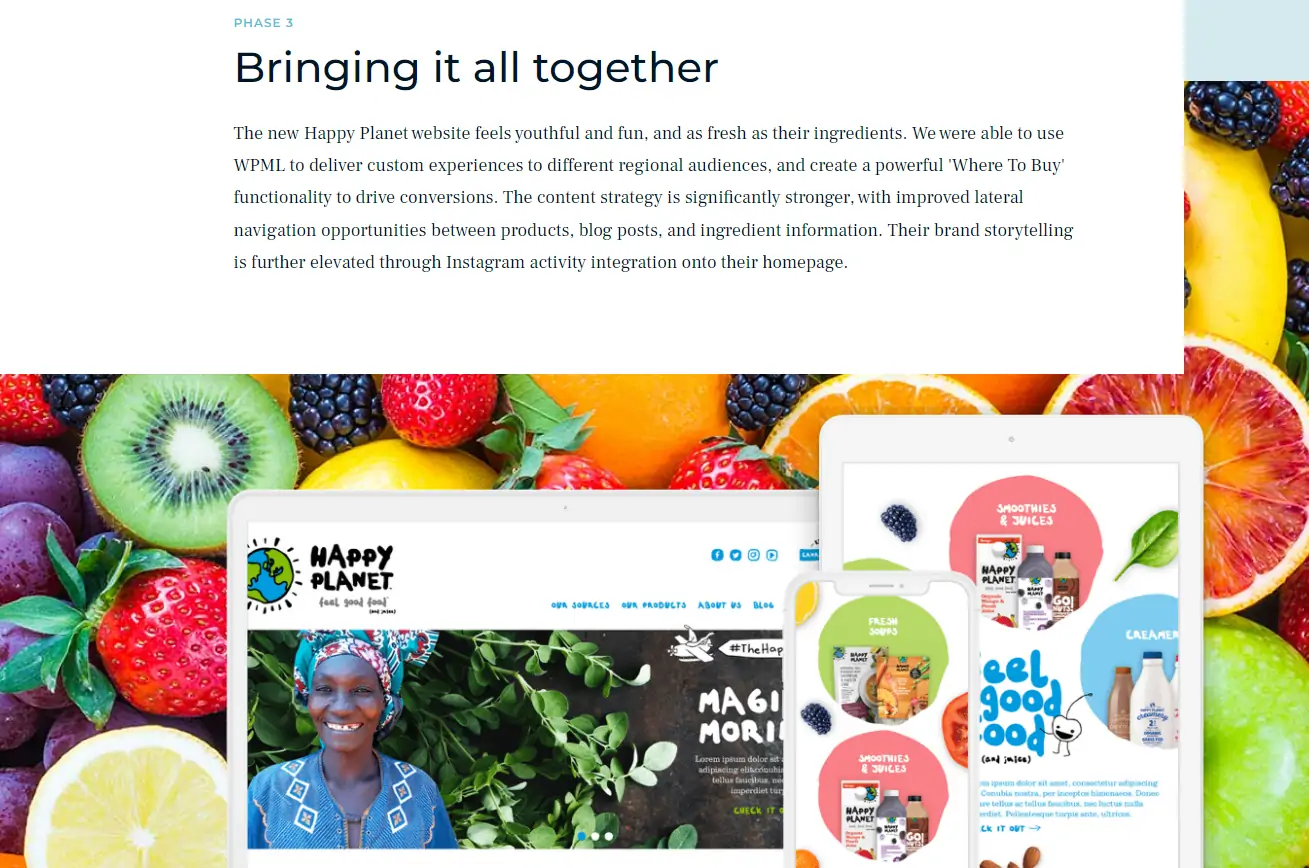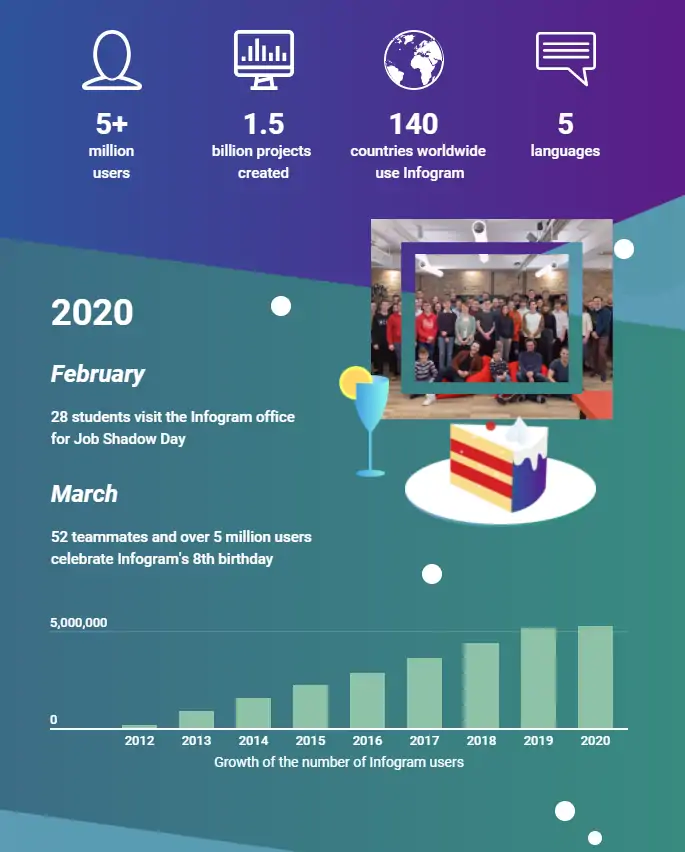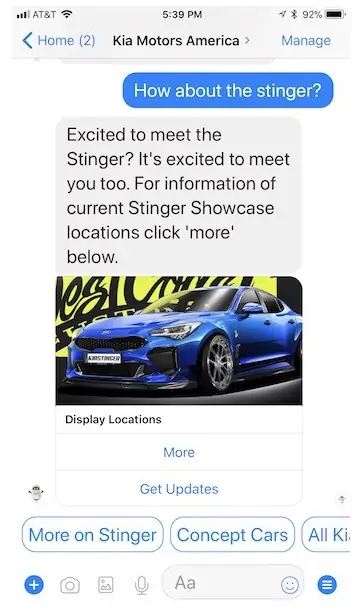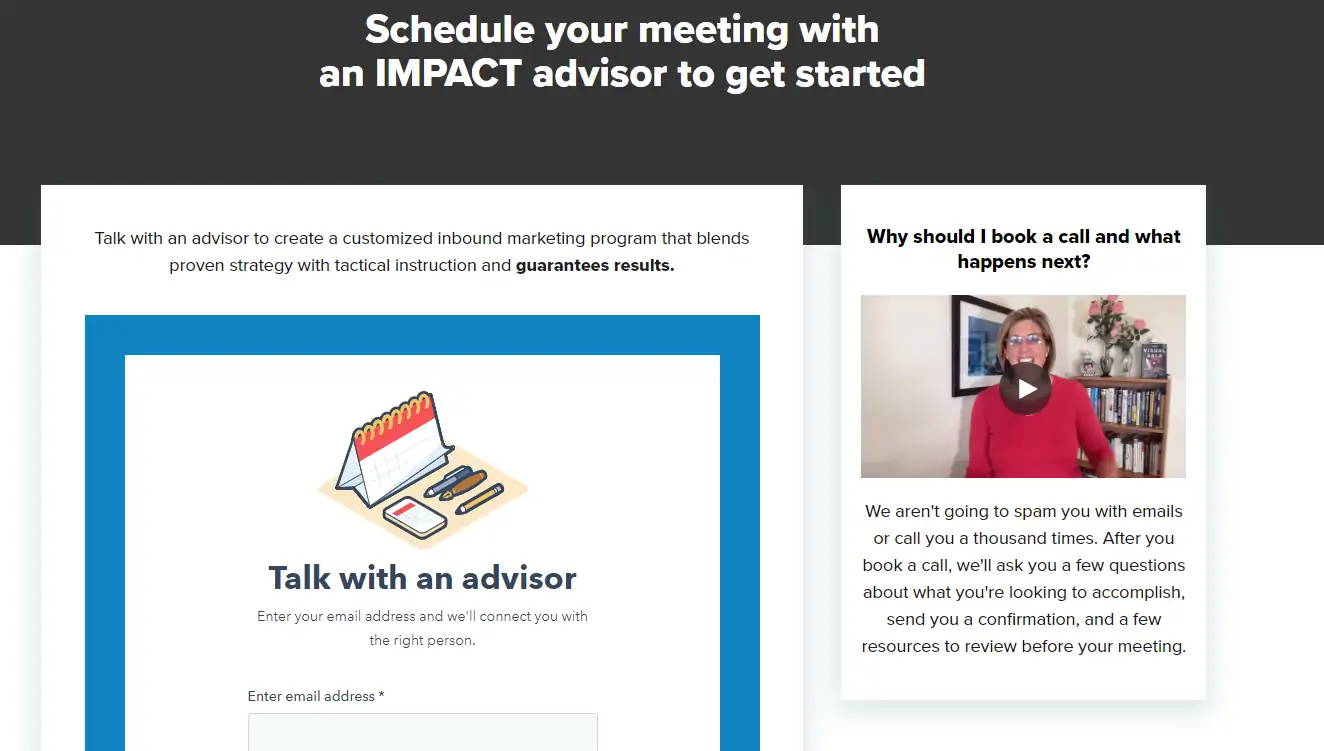The average U.S. adult spends 11.1 hours a day consuming media — which is excellent news for brands trying to reach their audiences online.
The challenge, however, is grabbing people’s attention when there are so many options. Facebook, Instagram, Reddit, news sites, email, YouTube videos, even streaming platforms like Netflix are all vying for our attention.
Your content needs to be compelling if you want to stand out in all this noise. That’s where visual storytelling comes in.
What Is Visual Storytelling?
Visual storytelling uses images and other visual content to share a narrative.
Essentially, it’s telling a story, but with images or video. The strategy includes any content or message conveyed through visual media, from static images such as photography and illustration to animations and videos.
Here’s a visual storytelling example about the carbon cost of transportation;

It doesn’t seem like a particularly fascinating topic on its own, but visual storytelling brings it to life with charts, icons, and text.
It also includes notes about how different types of transportation can lower your emissions, providing context about why the data matters. For example, taking a train over a flight could reduce emissions by 84 percent. That’s a significant decrease that may convince users to take a train next time they travel.
This is a fantastic example of visual storytelling that makes it easier to understand dry facts by adding context and explaining how it applies to people’s everyday life.
Why Is Visual Storytelling Important for Content Marketing?
Visual storytelling combines the power of storytelling with the uplift provided by visual content to create more exciting and entertaining content. Visuals attract attention and tell a fuller story in just a few seconds.
Storytelling helps explain and solidify abstract or hard-to-understand ideas, making them easier to consume and understand.
Let’s say you’re trying to close a new client. You send an email saying, “We generate an ROI of 200% for our clients.” That’s impressive, right? Obviously, they’ll want to work with you.
But the statement alone lacks power. There’s no context, nothing to back you up. What if you sent a short video review from a recent client explaining how you helped their business grow 200% in just six months instead? That’s a lot more believable and a lot more interesting.
That’s the power of visual storytelling – and social proof, too, in this case.
4 Ways to Add Visual Storytelling to Your Content Marketing
Visual content can stand alone — or it can help turn your written content into attention-grabbing content that drives traffic and sales. Here are four ways to integrate visual storytelling into your content marketing.
Help Case Studies Shine
Case studies build trust by showing prospective customers how your product or service helps others reach their goals. Adding visual content like videos, graphs, or interactive content to your case studies makes them more persuasive and engaging.
Forge and Smith used visual storytelling, including design elements and wireframes, to show how they designed a new website for one of their customers. By walking readers through the process, they create an engaging story — and show prospective customers what they’re like to work with.

Use Infographics to Spin Data Into a Story
Infographics create a data-rich visualization of a story that is easier to read and understand. And, they’re powerful — a high-quality infographic is 30 times more likely to be read than text articles. Another study found infographics can increase site traffic by 12 percent.
In 2020, Infogram celebrated eight years in business. Rather than post an article about their history, they decided to turn their company’s history into an interactive infographic.

Using the infographic creates a story about the company — when they were founded, how they grew, even causes they support. An article or list alone wouldn’t have been as insightful to read.
Infographics can stand on their own or be integrated into written content. For example, a written case study could include a small infographic highlighting the results. Infographics can also be used as part of a stat round-up, to display original research, or outline complex processes.
Add Chatbots to Engage Your Audience
Chatbots can qualify leads, share resources — and yes, even tell stories. Chatbots allow you to tell stories in the form of a conversation, which is how we’re used to communicating. Sharing visuals and text in chat helps users better understand information and increase sales.
Kia used a chatbot for visual storytelling by using Facebook messenger to help users find the right car. They shared images, links, and information about specific vehicles.

And it worked. Kia’s chatbot drove a 21% conversion rate — and allowed them to provide 24/7 customer service.
Storytelling chatbots can share case studies, explain your company history, even provide step-by-step instructions in a conversational format. Remember that chatbots mimic real conversations, so don’t be afraid to give it a personality and use more casual language.
Use Video to Show Rather Than Tell
As any English teacher will tell you, written content is more powerful when you show rather than tell.
In written content, that often means using examples and images — but you can also literally show by including short videos in your written content.
This post on video marketing uses examples in the form of videos to show their readers how good video marketing campaigns look.
Shorter videos can also be used in how-to posts to break down specific steps, answer questions, or to make your contact page feel more personal, like ImpactPlus does:

Test Visual Storytelling Formats to See What Works
Visual storytelling is captivating and convincing, making it a powerhouse for brands in any industry. While it might sound complicated, you don’t have to create a 4,000-word blog post with infographics, images, and videos to leverage visual storytelling.
Instead, choose a single format, like an infographic or video, and use visual storytelling to make it a little better. Even better, you don’t have to create new content — adding visual storytelling can refresh old content by making it more engaging.
Whichever visual storytelling technique you select, start small and track your results. You might find that your audience prefers videos or loves infographics. Pay attention to which formats gain traction and create more of that type of content.




